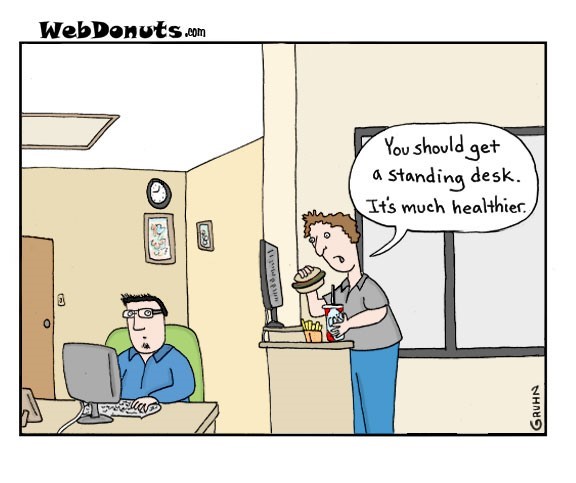Work-related pain is any condition which is either a direct result of injury at work or pain that has a significant impact on your work duties. Work-related pain can have a profound effect on both employees, employers and society as a whole due to impaired function, loss of productivity and use of health care services caused by these pains.
What causes work-related pain
Whilst the cause of work related pain is often a complex story, there are certain patterns and postures that tend to be consistent throughout a lot of injuries. These can include poor sitting posture, placing additional stress on the neck and upper back or poor lifting technique, placing undue load on the structures of the low back. Injuries can be sudden or traumatic, such as a fall from a height, but others may be less obvious and relate more to overuse. Work conditions involving sustained postures, repetition of similar movement patterns, continual load through a particular area of the body or a sudden increase in an employee’s workload tend to leave someone vulnerable to onset of pain.
Occasionally pain can come on without an obvious reason or source. In this case, it is important to look at the contribution of factors such as general health, sleep patterns, nutrition, mood and even genetics.
There is a plethora of conditions commonly associated with work-related pain which include but are not limited to neck pain and cervicogenic headaches, carpal tunnel syndrome, low back pain and upper limb disorders such as bicep tendinopathies or rotator cuff tears in more physical vocations.
Management
When you are in pain, often work can become increasingly stressful and you can feel like it starts to take on less importance in the scheme of things. Continuing to work has been shown to be beneficial in the rehabilitation phase but care needs to be taken that there is input from all sides to transition safely and effectively. Returning to work pain-free should be a multi-disciplinary process that involves cooperation between yourself, your employer and health professionals in a way that promotes long term relief of disability. There is no recipe approach to managing a person’s work-related pain but below are some common techniques and principles that help relieve or prevent disorders occurring:
- In specific incidents or acute trauma, focus should be placed on allowing the injured tissues to rest and heal before a gradual return to work program is implemented. This may involve periods off work or the splinting/taping of the affected joint. It may also involve some manual treatment from a physiotherapist to encourage tissue regeneration and relieve pain.
- In repetitive strain or overuse type injuries, focusing on healing of the affected tissues is only part of the issue. You also may need to look at the person’s environment and ergonomics. If a person’s injury has progressed through it’s normal healing phase (often around the six-week time frame for muscular conditions) without seeing much improvement, then there is a good chance their behaviours or work patterns during the day are still irritating the affected tissues.
- Ergonomics is the design and arrangement of a persons’ work environment to create an efficient and safe space with the goal of preventing or reducing someone’s pain. Training employees in ergonomic principles with common strategies like altering desk and chair setup (E.g. Standing desk), screen height or workstation layout may have a positive effect on a worker’s postural habits.
- Strength training should also be a mainstay in both attempting to prevent pain and rehabilitate injured workers. Overload or overexertion through the musculoskeletal system is a common cause of injury, and by increasing your load tolerance with exercise such as strength training, Pilates, or yoga for example, we are training these muscles above and beyond what will be required of them in a work environment.
- Active breaks that involve breaking up sitting time, carrying out some simple dynamic stretches and strengthening exercises, or even just going for a short walk will help to avoid the onset of pain. Making sure prolonged positions are broken up every 20-30 minutes is a good guide to start.
- Altering a person’s work duties for a period and gradually increasing to normal duties is a tried and tested approach to returning from injury.
- Pain medication can sometimes help relieve some symptoms, but the emphasis should be on using them whilst also actively participating in your rehabilitation to wean off eventually.
In a Nutshell
Prevention is always better than the cure in these instances. It is vital that both employers, employees and their health care team look for the root cause of a worker’s pain rather than just treating symptoms as it will no doubt be a recurring injury. The end goal is keeping the person confident and happy in their position and to do that we need open communication on all sides. If you are experiencing pain related to your work then please contact one of the physios at In Balance Physio and Pilates today.
